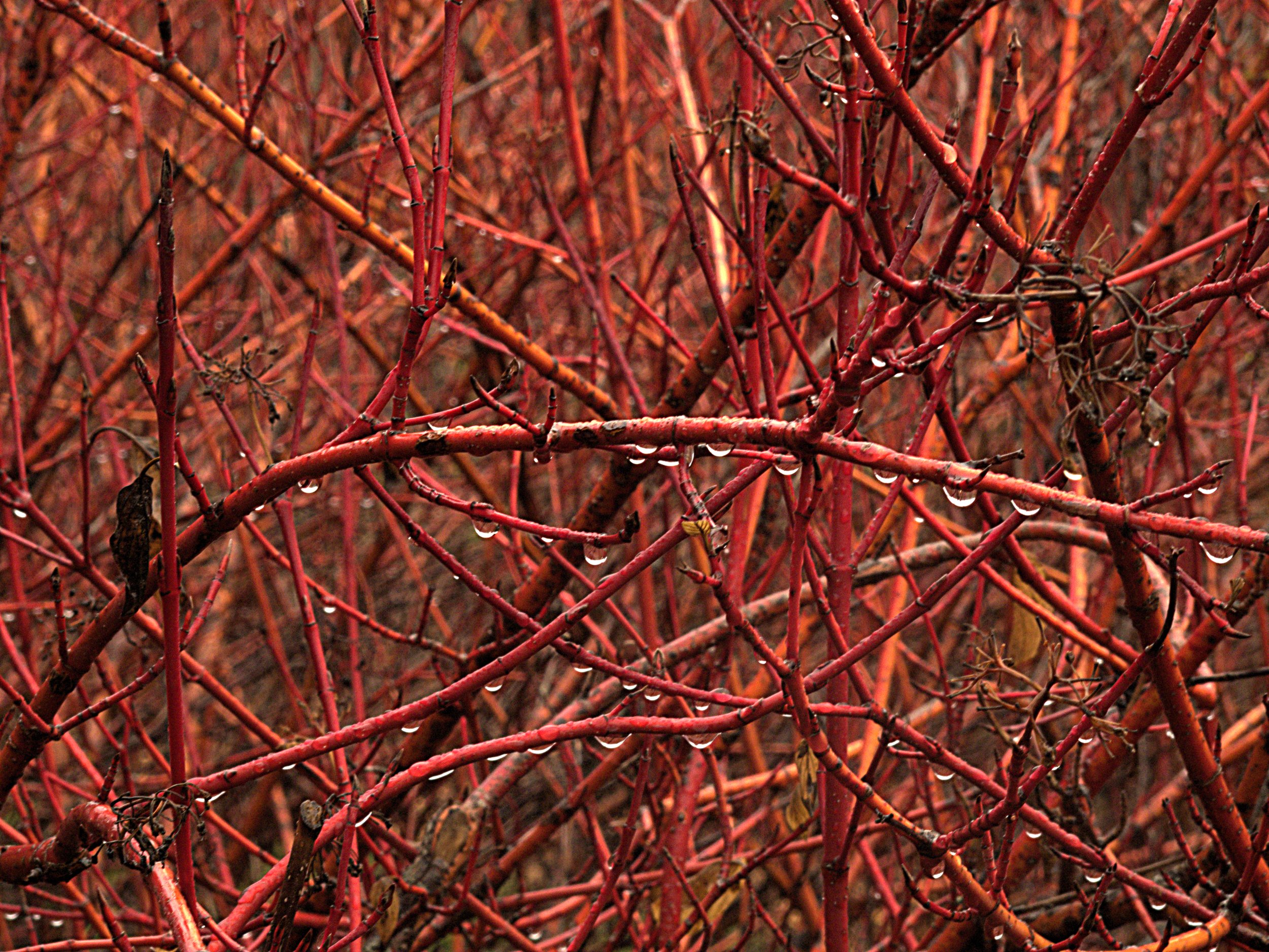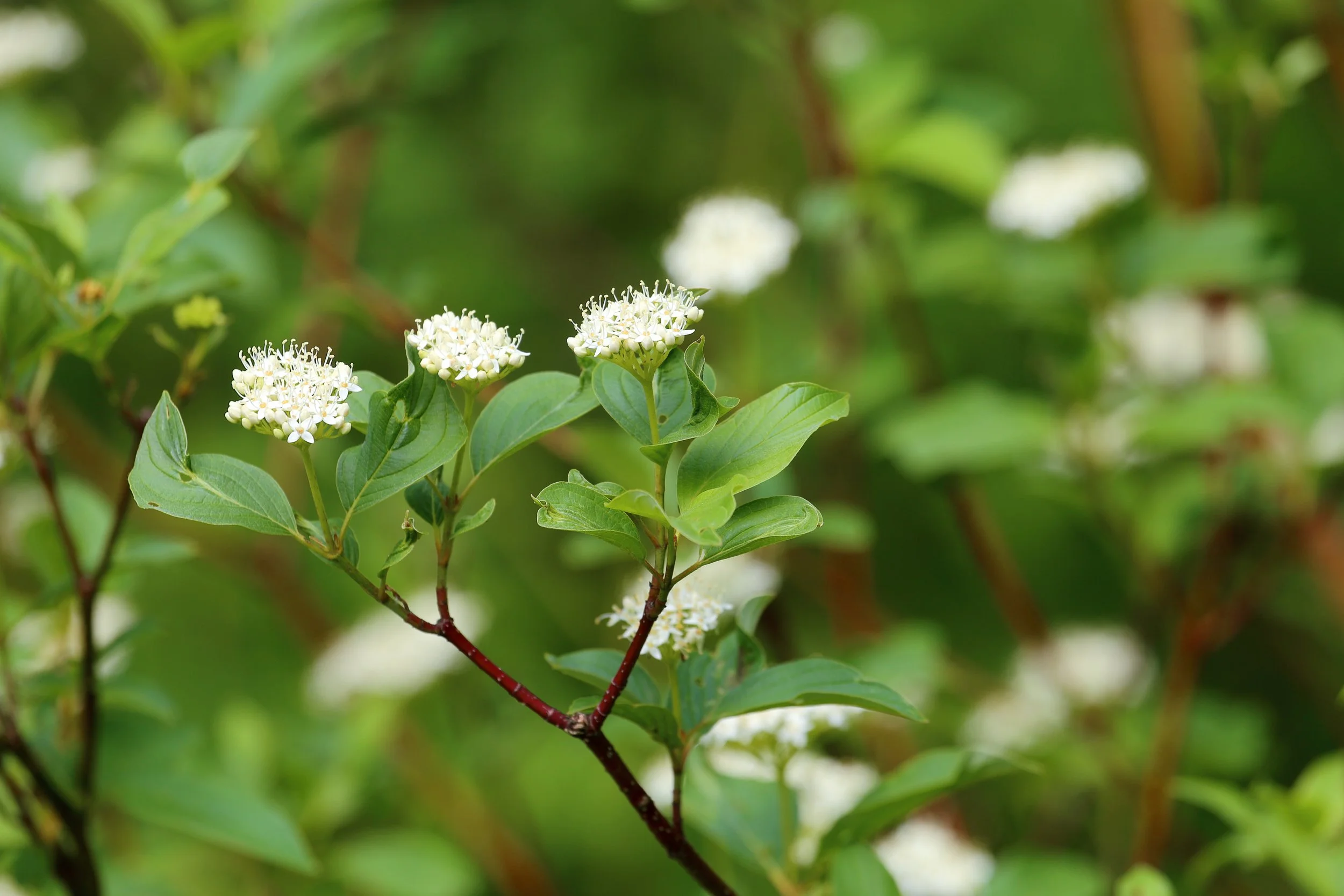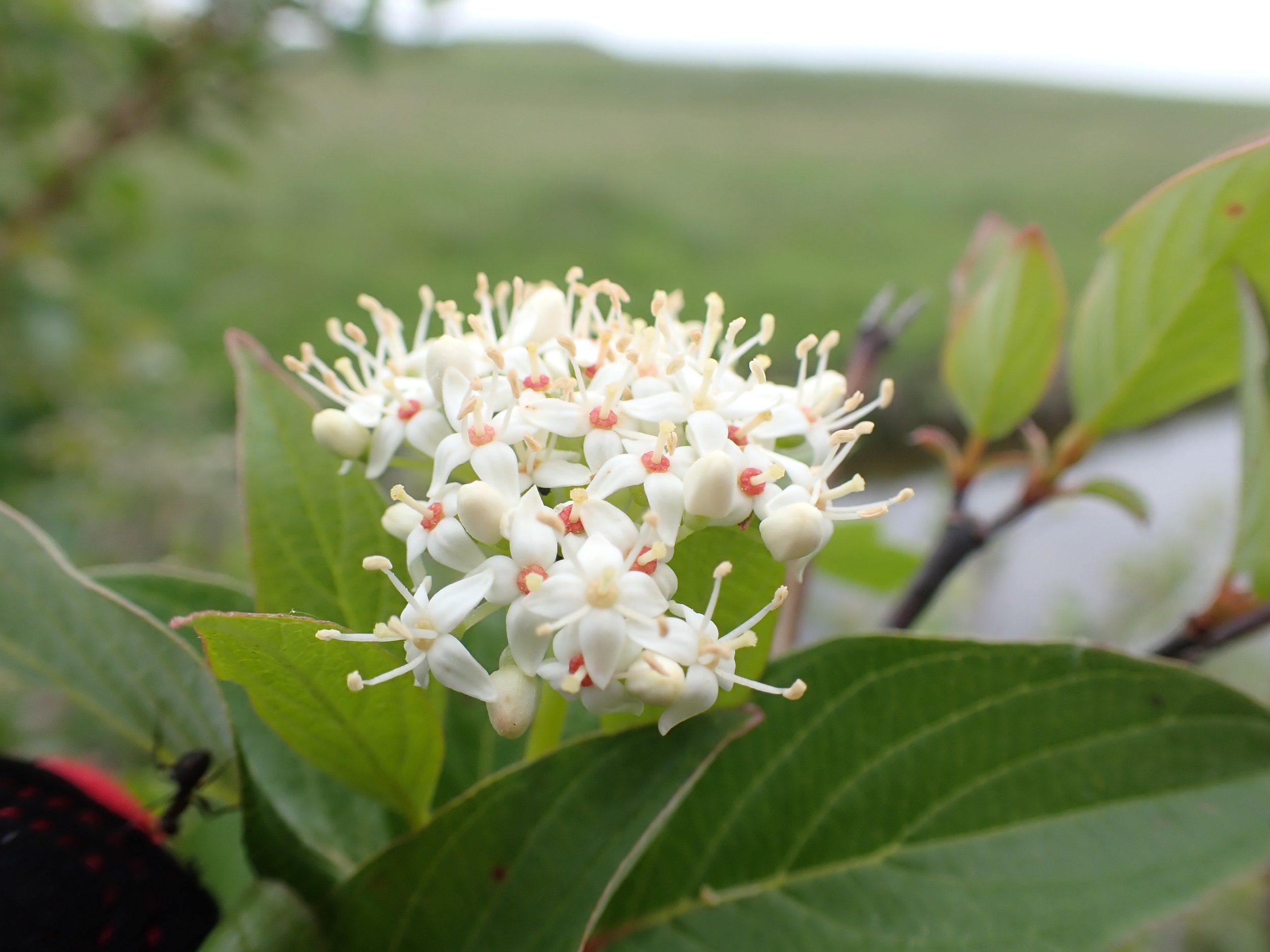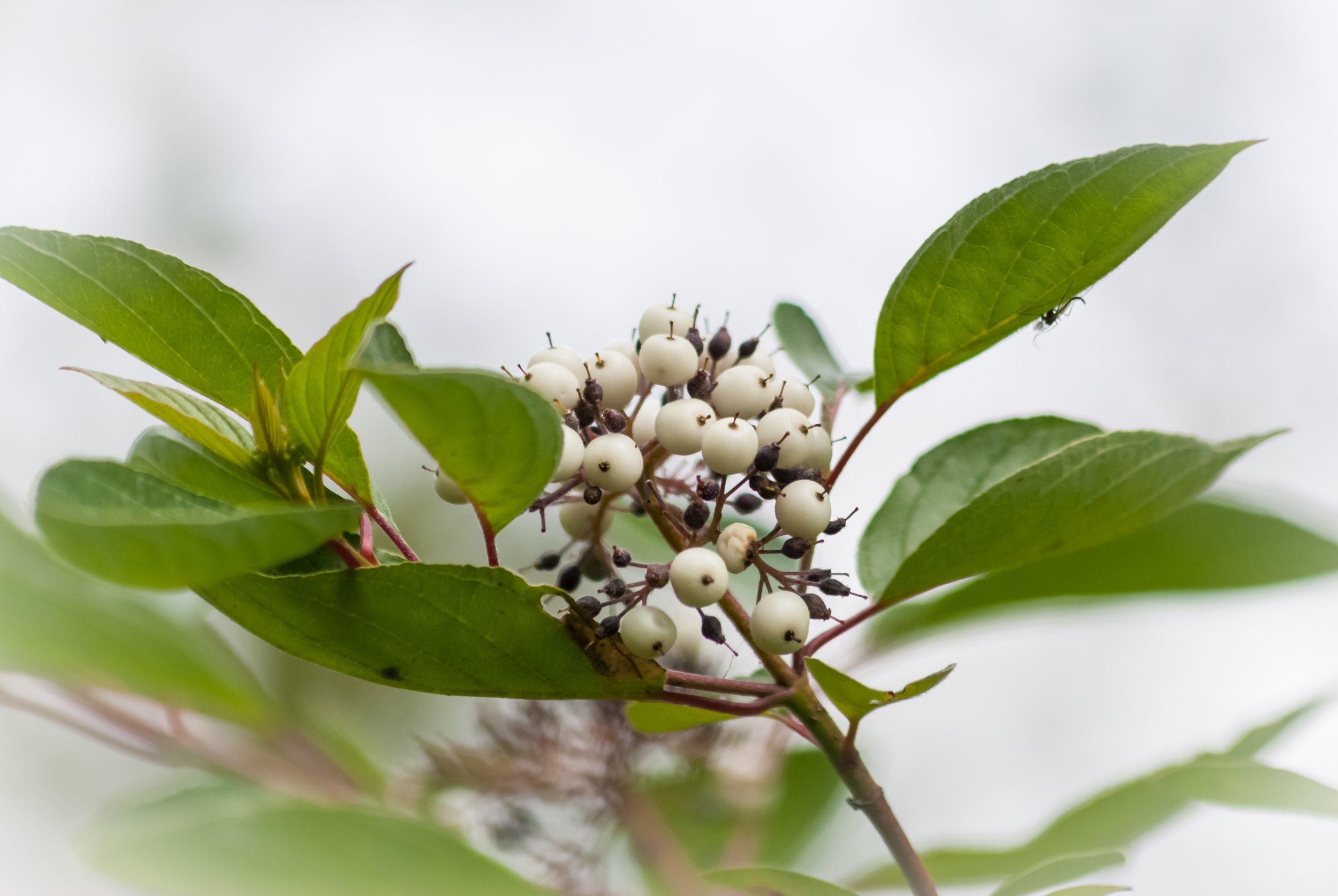 Image 1 of 7
Image 1 of 7

 Image 2 of 7
Image 2 of 7

 Image 3 of 7
Image 3 of 7

 Image 4 of 7
Image 4 of 7

 Image 5 of 7
Image 5 of 7

 Image 6 of 7
Image 6 of 7

 Image 7 of 7
Image 7 of 7








Red-Osier Dogwood (Cornus stolonifera)
Size (8-15”)
A striking native shrub known for its vibrant red stems, Red-Osier Dogwood adds four-season interest to any landscape. Clusters of creamy white flowers bloom in late spring, followed by white berries that provide food for birds in summer and fall. Its brilliant red stems shine against the snow, making it a winter favorite.
Well-adapted to Northern Michigan (Zone 5a), Red-Osier Dogwood thrives in moist to wet soils and tolerates a range of conditions, including clay and seasonal flooding. It spreads by stolons to form dense thickets, making it excellent for erosion control, wildlife habitat, and naturalizing. Its flowers attract pollinators, and the shrub offers year-round shelter and food for birds and other wildlife. Red-Osier Dogwood berries are used by 95 different bird species.
Identification / Key Features: Shrub with striking red stems, clusters of small white flowers in late spring, and white berries in fall. Leaves are opposite, ovate, and smooth-edged.
Mature Height / Size: 6–9 feet.
Growth Rate: Fast.
Light / Soil / Site Preferences: Prefers full sun and moist soils; tolerates wet or poorly drained soils.
Wildlife Value / Ecological Role: Berries feed birds and small mammals; stems provide winter cover. Excellent for riparian buffers.
Uses / Economic / Cultural: Used in landscaping for color, erosion control, and habitat restoration.
Size (8-15”)
A striking native shrub known for its vibrant red stems, Red-Osier Dogwood adds four-season interest to any landscape. Clusters of creamy white flowers bloom in late spring, followed by white berries that provide food for birds in summer and fall. Its brilliant red stems shine against the snow, making it a winter favorite.
Well-adapted to Northern Michigan (Zone 5a), Red-Osier Dogwood thrives in moist to wet soils and tolerates a range of conditions, including clay and seasonal flooding. It spreads by stolons to form dense thickets, making it excellent for erosion control, wildlife habitat, and naturalizing. Its flowers attract pollinators, and the shrub offers year-round shelter and food for birds and other wildlife. Red-Osier Dogwood berries are used by 95 different bird species.
Identification / Key Features: Shrub with striking red stems, clusters of small white flowers in late spring, and white berries in fall. Leaves are opposite, ovate, and smooth-edged.
Mature Height / Size: 6–9 feet.
Growth Rate: Fast.
Light / Soil / Site Preferences: Prefers full sun and moist soils; tolerates wet or poorly drained soils.
Wildlife Value / Ecological Role: Berries feed birds and small mammals; stems provide winter cover. Excellent for riparian buffers.
Uses / Economic / Cultural: Used in landscaping for color, erosion control, and habitat restoration.
